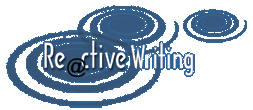Here we are again another 'Reactive Interview'. This time we talk to Rick
Pryll about Lies,
a short but perfectly formed piece of Hyperfiction.
Q. What made you interested in writing hypertext?
At the time, I was an undergraduate at MIT, and I had taken a few short story classes. I was also beginning a novel, and really just trying to expand my experience with writing to include different forms. I took a class, called "Interactive and Non-Linear Fiction" taught by Janet Murray, and was introduced to some hypertext classics like "Afternoon, A Story" and "The Garden of Forking Paths." I was immediately excited by the possibilities afforded in this new form. As a somewhat successful short story writer, I found it was a great way to capture some of the strengths of my writing.
Q. What do you think are the main advantages of hypertext fiction?
In every form of writing, an author is trying to express to a reader something. By allowing the reader more freedom than linear fiction allows, the experience of reading becomes more like exploring. One of the most important aspects of learning is discovery, and I think hyperfiction makes this especially accessible to readers. At the same time, I think that accessibility can become the biggest disadvantage of hyperfiction. It is dangerously easy to become completely cryptic.
Q. You said that you are not totally satisfied with your hypertext writing, what do you think are the main problems with it?
I think that I had to take a very controlled approach to "Lies" to achieve the success that I did with it. There are only two options on each page. There are only three endings to the whole thing. Imagine if I had tried three options per page, or ten. The ability of the author to present a coherent and interesting story quickly diminishes. I think that I have barely scratched the surface of the possibilities afforded by hyperfiction with this story.
Q. How far does the technology of the internet and the web (eg. downloading time or problems of writing with HTML) restrict your creations?
I originally wrote the whole thing in HyperCard 2.0 for the Macintosh, and the design was done at the same time as the writing. Better tools for mapping flows and linking have developed since then. In addition, I think the biggest restriction is screen size. I was very conscious of the fact that I do not like to scroll down at all when reading on a computer screen. I attempted to keep all my pages short enough to prevent scrolling down. This was an especially good fit with the Internet and HTML to prevent long response times from page to page. I guess the way I wanted to read became the way I wrote.
Q. How much feed-back do you get from people who have read 'Lies' and how much has this influenced your writing?
I have got great responses, and lots of them. I am always pleasantly surprised when someone has taken the time to read it. I like the emails when people tell me there are loose links (it means they spent some time with it...) and when they tell me about browser problems or the inconvenience of italics. I have often wondered whether I would get this much response if I published any of my writing in any other way. The Internet is really a wonderful gift to anyone who writes and needs readers. I would encourage anyone looking for criticism or encouragement to post to newsgroups, publish on the Web, send emails.
Lies
Rick
Pryll
rick@interport.net
Comments and responses to any of the interviews in the series can be sent to me at leo@reactivewriting.co.uk
Copyright
© L J Winson 1995 - 2000.
This
page was last updated 14 Jun 2000

